-
Posts
19,768 -
Joined
Content Type
Forums
Detector Prospector Home
Detector Database
Downloads
Posts posted by Steve Herschbach
-
-
Hi Mike,
So you ended up keeping it?
I have a GMT which is a great detector. It is too bad the SGT does not have a simple flip switch to go to a Locked mode. Like you say you can work around it but I prefer for the tracking to be shut off. It is very annoying on the tiniest gold targets which are exactly the targets I am normally looking for when I use the GMT.
Still, at $499 or less the Sierra Gold Trac is a certified smoking good deal in a hot 48 kHz ground tracking detector. It is far and away the lowest priced unit that offers ground tracking with the Tesoro Lobo at $799 being the next cheapest option. Too bad it is a semi-secret White's model only available to west coast dealers.
Maybe you can confirm something Mike. Jimmy's site indicates the SGT retains the GMT "Iron Grunt" feature but I believe this is a mistake on his website. The manual makes no mention of it. White's Sierra Gold Trac Owner's Manual Is the unit purely VCO all metal or is there an audio ferrous indication?
-
Thanks Mike. While this will tend to be prospecting oriented I do not intend on letting it be only that. I personally look for gold wherever I can find it. I jewelry hunt parks and tot lots. I love beach detecting. I still have not checked gold coin off my bucket list. Gold can be found almost anywhere, and there is no reason to limit looking for it to any particular means. So as a top-notch jewelry hunter I know you have things to contribute here.
-
I have contacted Garrett again and the information available has been refined.
"The ATX can be operated with Infinium DD coils. Performance with Infinium DD coils should be normal but is not guaranteed. The ATX cannot be operated with Infinium mono coils or any other Garrett coil other than ATX coils and Infinium DD coils. Recon Pro coils will not work on the ATX. The Recon Pro is not the same machine electronically, even though it looks similar. Use of any coil other than ATX coils and Infinium DD coils, including the use of 3rd party coils, will void the warranty."
So there you have it. The only coils you can run on the ATX are ATX coils (obviously) and Garrett Infinium DD coils. There are three Infinium DD coils available, 10" x 14" DD PN: 2217100, 5" x 10" DD PN: 2216700, and 3" x 7" DD PN: 2216600.
-
Hi Rob,
Great to see you here - thanks for joining!
As my review at http://www.detectorprospector.com/steves-mining-journal/gold-nugget-detecting-with-garrett-atx.htm the stock ATX coil does false when knocked or rolled on rocks, but not consistently. Enough though I tried to avoid hitting stuff with it. It never falsed once hitting bushes or stubble that I recall, but of course this was dry desert stuff. I do not think soft knocks will do it. My theory is it is sharper knocks causing cable motion. The coil is epoxy filled so should be impervious to falsing so I do not see what it could be but something farther up the line.
The ATX probably is a very good detector for New Zealand. There sure is a lot of the place that reminds me of Alaska. -
Hi Bob,
I was all over the place after the AMDS Forum folded but have not been happy since so decide to start a new home base here. Since I own this outright it will be around as long as I am, hopefully for a long time! Good to see you here, send any AMDS Forum orphans you see this way. Merry Christmas!
-
I believe one of the best books available for the small scale miner and prospector is Fists Full Of Gold by Chris Ralph. 362 pages of chock full of information on gold prospecting, small scale mining, and metal detecting. It really is worth a spot on your bookshelf or better yet in front of your nose. Check it out at my new information page Chris Ralph's Fists Full Of Gold

-
Every detector I have ever used goes gutless in discriminate mode. Might as well call it castrate mode. Disc mode even with the disc set to zero still is running everything though filters that rob depth.
-
No, I said the TDI appears to run just fine with mono coils more so than with DD coils. But you can run either. Most Minelab SD/GP coils work on the TDI but if they overload you need to increase the pulse delay to get stable performance.
I did plug the 10" x 5" Commander DD into my TDI last night and it worked fine but if it was me I would stick with mono coils on the TDI
I believe the Garrett ATX was designed specifically around the DD coil it comes with for good performance on small gold. In my limited use of the 8" mono coil so far it appeared to not be as quiet or smooth as the stock DD coil. Which is normally the case with PI detectors. DD coils were very popular on the Minelab units prior to the GPX series, then settings on the GPX were developed that favored mono coils. I almost never use a DD coil any more except on the ATX.
The bottom line for anyone is just try them yourself if you have them. Coils do vary somewhat in manufacturing and so you just never know. I was told by Garrett that Infinium mono coils would probably not work well on the Garrett ATX but I am trying them anyway. I have to find out for myself.
-
Sure can, though the ATX appears to be optimized for DD coils and the TDI more for mono coils. You can run any Minelab GP series DD coil on the TDI. I have the Commander 10" x 5" DD for my GPX. I will plug it into my TDI and get back to you here on how it flies.
I prefer mono coils normally but I suspect the ATX is going to run better with DD coils.
-
I doubt they are directly compatible. You would at a minimum need to cut the Garrett connector off and wire a TDI/Minelab connector on. The lack of aftermarket coils tells me Garrett is doing something different with their coils. Otherwise the aftermarket guys would offer Garrett versions of existing coils. So some sort if electronic balancing might also be needed.
With hundreds of coils available for the TDI it is not like it is worth the effort. What is it you are hoping an Infinium coil will do for a TDI?
-
Thanks to Dick Hammond for pointing this out. It is a reasonably inexpensive and effective alternative to the satellite phone. I have an Iridium phone I have used for years. It is the best insurance policy you can purchase for remote operations. But the phones are expensive, and the plans more so. Phones are around $800 now, but you can get used ones for about half that. It is the plans that add up. In Alaska we are lucky because a 6 month plan can be had for half what it costs for global minutes.
Information on DeLorme InReach
http://www.inreachdelorme.com/product-info/inreachse.php
Cost for Iridium Sat Phone Plans
http://www.satphonestore.com/airtime/iridium-airtime.html
I may sell my Sat phone and get the InReach and have money left over. May be a better option for me now. Buy an InReach Communicator here.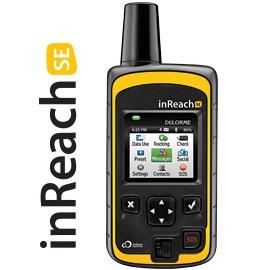
-
Minimal with DD coils, even less than stock coil, as I would expect with smaller DD coils.
-
Thank you one and all. Please let others who may be interested know about the forum. Thanks again!
-
Hi,
I have a Garrett ATX and have done some nugget detecting with it. See Gold Nugget Detecting with the Garrett ATX. However, the weight and the stock coil had me wishing for options. I wanted a smaller coil with no openings to hang up that could get into tighter locations. As a past Infinium owner the 10" x 5" DD coil immediately came to mind. See Detecting with the Garrett Infinium in Hawaii and the first picture will tell you what was going through my mind as I hunted gold nuggets.
So I have some Garrett Infinium coils I am trying on the ATX. The full story and photos are at my new Garrett ATX Accessory page. I will be updating it as I experiment more with the concept. An obvious alternative would be to make an adapter to mate a standard lower rod assembly to the ATX (it has already been done for the Recon) but I wanted to go hip mount for the least weight on my arm possible.I want to note here I am advocating nothing and recommending nothing. This is just something I am doing that may answer some questions for some people. If nothing else it will save somebody else making a duplicate effort or wasting the time and money on something that may or may not work out. Bottom line is I just have to know for myself so I will find out and report back as I go along. This thread will be the official question and answer thread for the experiment.
-
Keith is a wealth of knowledge. Nugget detecting is not his thing but maybe I can entice him here for a post or two.
"First of all he believed he could clearly hear the difference between Rusty objects and foil by the pitch of the response -these targets giving a higher pitched response than lead (and therefore presumably gold). Secondly when he put the detector in the alkali mode he found that if he passed the coil over the target several times hot rocks and iron targets would fade but more conductive target such as lead and gold would not fade."
Good luck with that. All detectors have strengths and weaknesses and experienced operators do learn tricks. But stuff like VCO pitch just reflect signal intensity. You hear it said time and again the soft signals are gold and strong ones are junk. Very true much of the time. Until it is not, and then a big nugget stays in the ground. I used to use the old hot rock fade trick with my Gold Scanner Pro. It can be used with the auto-tune system or the ground balance system, which the alkali setting directly adjusts. It just relies again on conditions that work most times in some places but which are not reliable.
Kind of like most gold goes hi-lo on a Minelab. Except the rare big ones which do not. Lo-hi is almost always junk, so an easy trick to get into habit of using. I think that one cost me a 25 ounce specimen!
Even iron disc works well until it does not, and how often it does not would freak people out if they knew the truth.
Big tip - it is all about site selection. If you do not know gold is around, be picky, use whatever tricks you want. Until you find a nugget. Once the spot has proven to contain gold, dig everything. It really is as simple as that.
But same story, the Lobo is a very good detector in knowledgeable hands and will produce the goods if used correctly. Never forget the original 19 kHz Gold Bug, 17 kHz Lobo SuperTRAQ, 14 kHz MXT, and new 19 kHz Gold Bug Pro are all Dave Johnson detectors. They are more alike than different. All ice cream, just different flavors.
-
I just got this in the mail today:
Hello,
The makers of Gold Rush on the Discovery Channel are looking for gold miners. Do you think you have what it takes to operate heavy equipment, fix mechanical breakdowns and find gold!
…Or do you know someone who does?
Please apply if you …
• have 2 years previous mining experience (preferably gold)
• Or have at least 2 years employment operating heavy equipment (such as Loaders, Excavators and Dozers)
• Or are a heavy equipment mechanic
Please email the following information to: miners@raw.co.uk
• Name
• D.O.B
• Phone number
• Address
• How many years’ employed as a Heavy Equipment Operator
• How many years’ experience placer gold mining
• Why you would be an asset to a gold mining crew
• A recent photograph
• A Resume
Please help us spread the word about this opportunity by forwarding this email to anyone in the gold mining industry you think might be great for the job.
Thanks,
Gemma and Rebecca
RAW TV, Producers of Gold Rush
Third Floor, 13 – 21 Curtain Road, London EC2A 3LT
UK Company Reg. 4305751
VAT: 788 4624 73

-
Hi Jack,
Holding the Mode switch in the PINPOINT position on the Lobo removes the Auto Tune until the switch is released. It will indeed help keep weak targets from fading if employed immediately after acquiring said target. I am picking on the Lobo of course. As I note in the article I think a person can use any of them and be just fine. I know people who own and swear by the Lobo. I still think it would benefit greatly from having a manual ground balance option. For me personally having simultaneous all metal and disc modes on the Bug is the kicker.
Like I said, each person needs to decide what is most important to them. I would not want everyone to take my article as an endorsement of the Bug per se. What is important is the thought process, and somebody else may employ needs and desires to arrive at a different outcome. If weight did not matter at all to me I might still be swinging an MXT.
And if I was buying a detector as a gift for somebody not likely to really learn their machine the Lobo might be the choice. In fact I did just that. I bought my father one because it is pretty much turn on and go, and it has served him very well. The Lobo is a very forgiving machine. We used them at my pay-to-mine operation at Moore Creek for the very same reason.
-
Hi Steve,
The F75 and T2 are excellent detectors. They run at a bit lower frequency than the Gold Bug Pro (13 kHz vs 19 kHz), hit big gold just a tiny bit deeper, and are a hair less sensitive to small gold. For the purposes of the comparison though they cost twice as much as all the detectors listed all for features not needed for nugget detecting.
Still, the T2, the Teknetics variant of the F75, is one of the most popular detectors used in the gold rush overseas. And the F75 got glowing review by Jack Lange at http://www.fisherlab.com/magazine/
I of course did very well with the F75 SE as shown at http://www.fisherlab.com/Hobby/finds-Steve-Herschbach.htm and in fact am writing an article for a magazine about it. But this summer I fell in love with the Gold Bug Pro with 10" x 5" DD combo and ended up using it most if the time. It really just depends whether you want the detector to skew more towards small gold at the Gold Bug Pro higher frequency or towards bigger deep gold at the F75 lower frequency.
Again though, I wanted to keep the article focused, and sticking to a similar price range makes for a better apples to apples comparison.
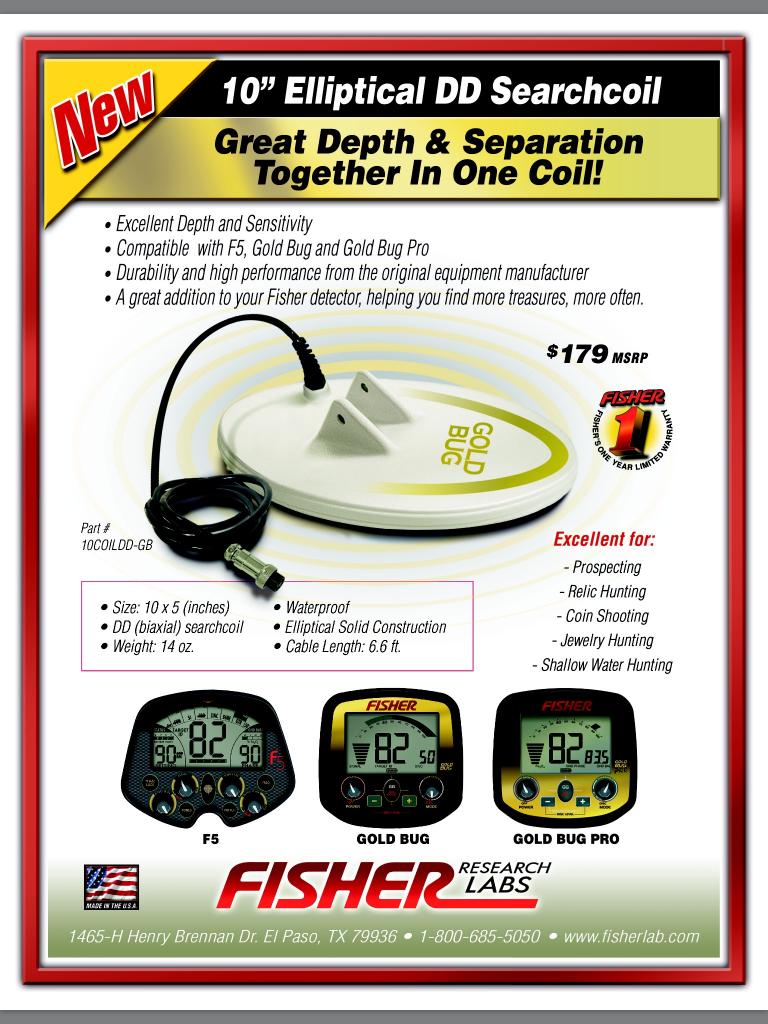
-
Hey Jack,
Yeah, sorry I saw so little of you. I will be back up next summer. You going to be around?
I did not so much retire as move. Keeping plenty busy!
-
USGS Professional Paper 610 by A. H. Koschmann and M. H. Bergendahl - A description of the geology, mining history, and production of the major gold-mining districts in 21 states. This 1968 publication obviously lacks the latest production figures but it still is a great overview to where an individual prospector can look for gold in the United States. It is a huge 283 page pdf download so be patient! Pay particular attention to the listed references in the extensive bibliography for doing further research. I have the original out-of-print hardback but what I paid for you get for free!
You can download this here and find many more useful free books on this website at the Metal Detecting & Prospecting Library -
Despite all the noise about pulse induction (PI) metal detectors these days I firmly believe that in the United States most beginning and many professional nugget hunters are often better served with a good mid-frequency VLF. For beginners I think it is more important to master the real skills involved in prospecting before investing a ton of money in a metal detector. If you can't find gold with a $700 detector there is little point in investing thousands of dollars in a detector that still probably will not find the person any gold.
Perhaps a PI is required in most of Australia but I have seen very few places in the United States where a good VLF will not work very well or at least well enough. Certainly in Alaska that is the case, where low mineral ground and smallish gold is the norm. Even locations where large gold lurks are so loaded with iron junk a PI detector has a hard go of it. It is nearly impossible to convince die-hard PI users to accept this until they experience it for themselves.
One of the best detectorists I know has found hundreds of ounces of gold including two nuggets each weighing over a pound, all with a White's MXT. He also has a Minelab GPX 5000 and is very good with it. This last summer we hunted a lot together in junk infested tailing piles. I tended to use my GPX 5000 and he tended to use his MXT. We ran neck and neck for finds, and he detected less and dug way less junk than I. When all the shallow stuff is gone a PI shows its value with extra depth. But in target rich environments, especially ones filled with junk, a good VLF is a worthy choice.
Let's set the VLF versus PI thing aside though and accept for the purposes of this article that VLF detectors are still a good choice for many people in the United States. I know for a fact I could own nothing but a VLF and do very well indeed. So what VLF to own?
Two detectors stand out in their high operating frequency as dedicated nugget detectors, the Fisher Gold Bug 2 and White's GMT. I could make a great argument for why either of these detectors will eke out gold where other detectors fail and do it consistently enough that a skilled operator would be wise to own either one. However, I think overall a better case can be made that if a person had to own just one VLF detector, a mid-frequency model would be a better choice. There is much more versatility offered plus a better balance of performance on all ground types and all gold sizes than the hot high frequency models.
The contenders from the "Big Five" brands? The Fisher Gold Bug Pro (also sold as Teknetics G2), Garrett AT Gold, Minelab X-Terra 705 Gold, Tesoro Lobo SuperTRAQ, and White's MXT. All available for around $700 more or less. This is the choice I personally faced, and the decision took several years of use to settle. What follows is purely personal but I will explain why I ended up where I did.
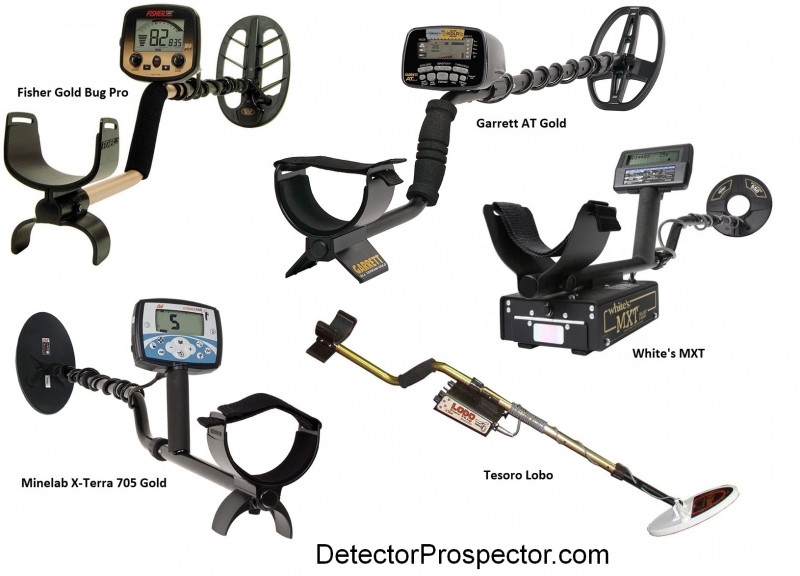
Fisher Gold Bug Pro, Garrett AT Gold, Minelab X-Terra 705 Gold, Tesoro Lobo, White's MXTFirst up, the White's MXT. Simply a superb detector, and one that has found me pounds of gold. Yet I am just going to go ahead and blow White's off at this point! Why? The weight. I am sorry White's, but at 4.3 pounds the MXT is the heaviest detector in this slug-fest. I love what the detector does, but I am no longer willing to forgive detectors with poor ergonomic factors, weight being the most obvious. In the 21st century, the day and age of the iPhone, poor ergonomics is not acceptable. The MXT needs to lose a pound, plain and simple. So I sold my MXT after one particularly arm wearing day.
Now the Tesoro Lobo SuperTRAQ is a great beginners detector in that it is very easy to operate, but it also gets put aside. The detector is locked in ground tracking at all times while in all metal nugget mode. This is great for beginners but I personally find it unacceptable. I almost never use ground tracking systems as they mess with the signals from weak targets. If there was a locked or fixed mode it would be fine. Worse yet, the alternative discriminate mode has a factory pre-set ground balance. Sorry, fail. Just my opinion, but the Lobo is way overdue for an update after 16 years on the market.
Garrett is to be commended for finally producing a waterproof detector that does not penalize the owner by weighing a ton and removing all the features. The AT Gold is a miracle in being waterproof and yet fully featured, with even the speaker being waterproof. And only three pounds with batteries! This detector is so wonderful I really do feel bad about taking a pass on it here also. Why? Sadly, the waterproof design also means special o-ring connectors for the coils and headphones. If you do not need the detector to be waterproof they are delicate connectors that collect dirt and require quite a bit of care to not mess up. The coil connection in particular is in a maddening location making it almost impossible to connect coils with bare fingers alone. A special adapter must be purchased if you want to have a choice in headphones. If you want waterproof the AT Gold is an obvious choice but I do not need waterproof for most of my nugget detecting.
So down to two models, the Fisher Gold Bug Pro and Minelab X-Terra 705 Gold. Both under the magic 3 pound mark! Both with extremely powerful all metal modes. So powerful that in all metal mode these detectors give the PI units a run for depth in most ground on most gold in the US. This was tough for me as the X-Terra has a far richer feature set than the Gold Bug Pro and for many all around users would be the better choice. But I looked at both from strictly a nugget hunting perspective where those extra features are extraneous to the task at hand. It came down to this. In all metal mode the Gold Bug Pro is simultaneously and separately running in discriminate mode. The audio response is pure all metal, but you also get the probable target id, when possible, displayed on the screen. Very deep targets will have no target id, which is why we are using all metal prospect mode in the first place.
The X-Terra 705 you can run in Prospect Mode or Discriminate Mode, but not both at once. This one thing leads to more efficient detecting with all the information you need on screen at once. The Gold Bug Pro gives you the target id, ground phase, and magnetic susceptibility reading all on screen at once while in all metal mode.
ads by Amazon...
That is how I settled on the Fisher Gold Bug Pro as my all around do everything nugget hunting model. It is not a coincidence it is also the lightest of the bunch at only 2.5 lbs with battery and 5” round DD coil and 2.7 lbs with the 5” x 10” DD coil. It is a basic unit that gets the job done, and that appeals to me. Plus, it does just fine for coins, relics, and jewelry if I wish. if I could improve only one thing it would be to swap the position of the target id and phase readout on the meter.
I have to wrap this up by pointing out that these are all fine detectors. I can actually find gold about as well with all of them. The engineers have mid-frequency all metal detectors figured out, and in all metal mode these models are practically equivalent. Small nuances that help one model in certain ground cost it in another and it all evens out. So from a straight up all metal nugget hunting perspective I think a person can use any one of these detectors and be just fine. What differences there are show up far more when comparing discrimination features which are of little use to the nugget hunter.
With that said, the final lesson in this article is that it is all the other factors a person should be looking at when making a choice. For me it was just lightweight basic operation. But if waterproof is important, the AT Gold is a no-brainer. The Lobo is very forgiving for beginners simply because it is locked in ground tracking mode. The MXT is a superior all-arounder, and the X-Terra has various tone schemes and notch discrimination features common on top-end detectors. You can make the case for any of them depending on your own particular needs and desires in a detector, and know you will be well served for basic all metal nugget hunting capability. We are lucky to have so many fine choices, all at very affordable prices.
-
Thanks Jack and Teddy. Gotta love our furry friends! I used to have a Ted (Theodore), an amazing English Bull Dog. What a great little guy. I do miss my four legged prospecting companions but my wife and I have opted for smaller pooches these days. Just got two miniature dachshund puppies to harass our existing dachshund. Absolutely nuts, they are a joy to watch blasting around the house. If life gets me down nothing like a puppy for a quick pick me up.
Best wishes to you and Teddy in the field!
-
Hi Rick,
Congratulations on being the first member. It will be interesting to see if the forum gets off the ground. There are plenty of forums out there but this one is rare in that it is not dealer owned or operated. That removes lots of constraints. Thanks for the vote of confidence!
-
I added the upcoming Minelab SDC 2300 metal detector to my website in the Equipment section. I will update this with new information as soon as it is available. The next release of information by Minelab is slated for January 31, 2014. According to the Codan (owner of Minelab) announcement at http://www.codan.com.au/Portals/0/investorpubs/2013%20Business%20Update%20and%20Profit%20Guidance.pdf the detector will be on the market in April 2014 but of course this could change.


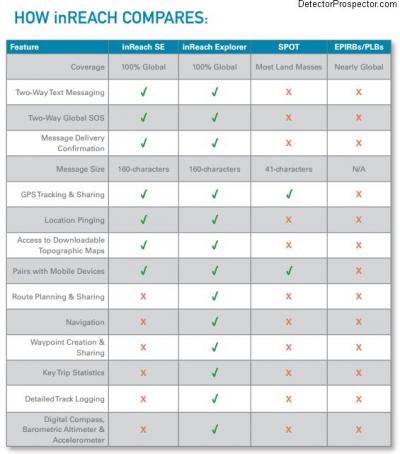
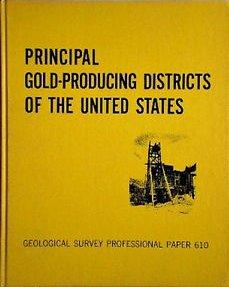
Whites Sierra Gold Trac
in White's Metal Detectors
Posted
It would be interesting to see a GMT circuit board and SGT board side by side. Did they just take a GMT board and not hook up everything? Or did a separate stripped down board get made? Check this out in case you ever get a look inside. White's GMT Rebuild. Not the clearest pictures but maybe enough to see differences. The GMT board was very well marked with what hooked where.
Add a single switch to toggle ground tracking and have unit always run with the iron grunt feature engaged, that would be a great little unit!
White's GMT Circuit Board